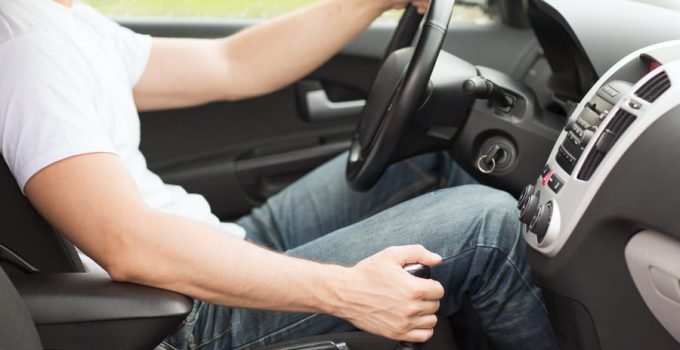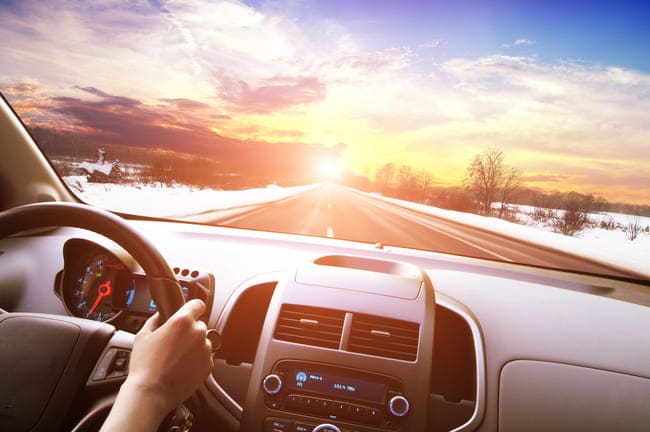
One of the most basic functions of a car is braking. However, many overlook the fact that different ways can be employed in different situations to slow the vehicle. In addition to the normal brakes of a car, you can also use the engine brake. It is part of an anticipatory driving style and not only protects the brakes, but can even prevent an accident in risky situations, for example if the vehicle's brakes fail. In this article you will find a guide for this method and all the advantages and disadvantages of engine braking for passenger cars.
The engine brake for trucks and buses is another topic in its own right, since there are components installed especially for this purpose.
Contents
How does engine brake work?
The principle is simple: the driver takes his foot off the gas, the engine runs idle – not to be confused with idling – the engine friction creates a braking effect, this is called engine braking. To further increase the engine braking effect, instead of pressing the brake pedal, you shift down a gear and the engine automatically slows the vehicle down as the braking torque of this braking method increases with rpm.
When should engine braking be used?
In order to use the engine brake correctly, it should be considered when it makes sense to use it. This type of braking comes into question when braking does not have to be done suddenly, but the braking maneuver is foreseeable a while in advance and a slower deceleration of the vehicle is sufficient. This includes, for example, scenarios such as turning, cornering (especially serpentines), stopping at a red traffic light that is visible from a distance, at stop signs, and so on. Naturally, braking with the engine is not suitable for areas with inclines, but rather on flat routes or when going downhill.
As mentioned at the beginning, the engine brake is suitable for emergencies when the brakes fail, are insufficient or no longer work due to environmental conditions.
But it is also helpful to brake the car properly under the following circumstances:
- In winter it can freeze and the road conditions become unsafe and slippery, which poses many dangers. The driving behavior can be stabilized by the technology of engine braking and the drive wheels can be prevented from spinning because they are locked when a gear is engaged.

- Long-distance descents are not only tiring for the driver, they also strain the brakes. Road grip is low in such situations, which is why it is often necessary to brake longer and harder, which often results in abrasion and overheating of the braking system.
By the way, the engine brake also works with automatic. Although shifting is automated, the selector lever can still be used to a certain extent and shifting into higher gears can be restricted.
The method is also useful for drivers of heavy vehicles such as trucks, although more effective versions such as the engine brake are used here, which are based on a different functional principle.
What are the advantages?
- +Brake wear is reduced: the components of the vehicle's standard brakes, e.g. B. the brake pads and discs are spared, as they are not used at all in the best case. If the engine braking is not enough and you still have to press the brake pedal, they are still used a little less. The longer the brakes are used, the higher the risk that they will overheat and become damaged.
- +The clutch is protected: It is avoided that the vehicle is operated in neutral and then suddenly a lower gear has to be engaged to start off again, because this subjects the clutch to a high load.
- +Fuel consumption is reduced because no more fuel is injected, so meanwhile consumption is 0. You may be wondering now whether running the car at idle does not have a better effect on petrol or diesel consumption. Although this assumption has a core of truth, it no longer applies to modern vehicles, i.e. since the 1990s, in which fuel injection is interrupted by overrun fuel cut-off. As long as the engine is running and you are not accelerating by pressing the gas pedal, there is no consumption. By anticipating driving in combination with this braking technique, fuel consumption can be reduced enormously, since the accelerator pedal is used much less. Fuel is only injected again when the engine speed falls below a certain value, so that the engine does not stop. There is also no need to worry that driving without gas will damage the engine. On the contrary: the lubricant that protects the engine from wear and tear is not removed by injected grease-dissolving fuel. In addition, this process has a positive impact on battery charging.
This series of advantages speaks for itself: It is worthwhile for you and your car to incorporate this braking method into everyday driving, but it should not be used as a substitute for the foot brake.
Disadvantages and Safety Risks
While engine braking has practically nothing but advantages for your car from a technical point of view, there are still a few things you should be aware of.
- –For reasons of road safety, it is important to remember that the brake lights are not activated and thus the road users behind you are not signaled to brake. The driver needs to be particularly careful here, even if other drivers can foresee braking due to the situation, such as a red traffic light. Keep an eye on the road behind you by looking in the rearview mirror.
- – You should also remember that you should not suddenly switch from a gear that is too high to a very low one, as this can cause the car to skid dangerously. Use this braking method properly and not in the same way as the foot brake. Engage the lower gears step by step. A sporty driving style is therefore not recommended if you want to brake with the engine. In any case, this type of braking is generally better suited to a careful and prudent driving style that is designed to save resources.
- – Another issue is the volume: The engine brake generates significantly more noise than conventional braking. Even if some drivers like loud noises from their engine, the driver needs to make a reasonable assessment of the environment. If you drive through a residential area at a late hour, you should keep the noise level low out of consideration for the residents and, exceptionally, do not use the engine brake.
